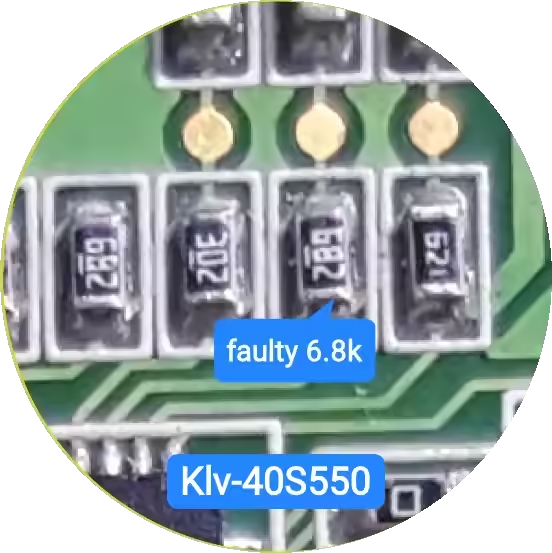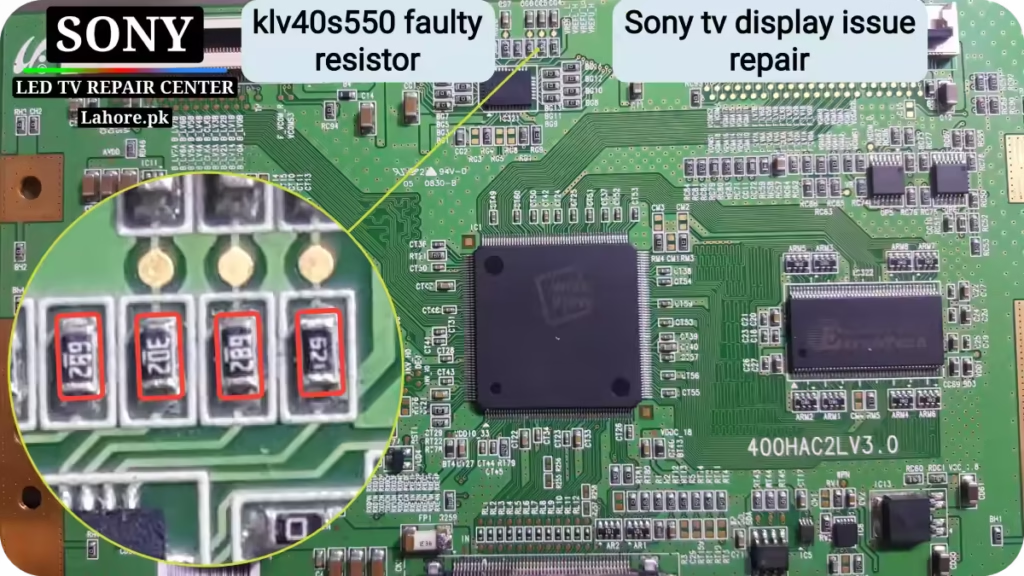Sony tv display issue repair klv 40s550 faulty resistor
Recently, a Sony LCD TV, model number KLV-40S550, was brought into the workshop for repair. The primary issue reported by the customer was a noticeable reduction in screen brightness and distorted color quality. This type of problem can often be linked to various internal components, especially those affecting the display and image processing functions. As a professional repair technician, my first step was to thoroughly diagnose the problem and identify the faulty part(s) causing the malfunction.
Fault Diagnosis Process
Upon receiving the TV, I immediately began the diagnostic process. The first thing I checked was the mainboard, particularly the LVDS indicator coils. The LVDS (Low-Voltage Differential Signaling) coils play a crucial role in transferring data between the mainboard and the display panel, and any issue here can directly affect the screen’s performance. I tested the coils, and fortunately, they were found to be in proper working condition. Since the coils were fine, I moved on to the next step: inspecting the T-con card, which handles the communication between the mainboard and the display.
I measured the voltage across the T-con card to ensure that all voltage levels were correct. After carefully checking each reading, I confirmed that the voltage levels were within the normal operating range, eliminating the possibility of a power issue. This narrowed down the problem to something within the gamma correction stage of the TV.
The gamma correction stage is crucial for accurate color reproduction and screen brightness control. If there’s a fault here, it can result in problems such as low brightness, poor contrast, and distorted colors, which is exactly what the customer was experiencing. Upon closer inspection of the gamma correction stage, I found the root of the issue: a faulty resistor.
Identifying the Faulty Component
The gamma correction circuit had a Gamma IC that was responsible for regulating the brightness and color balance. However, the real culprit turned out to be a faulty resistor in the circuit. Specifically, the resistor labeled RG19, which had a value of 6.8k ohms, was defective. Resistors in these circuits are critical for controlling the voltage levels, and even a small deviation can lead to significant performance issues. In this case, the failure of the RG19 resistor was causing the display to show incorrect colors and dim brightness.
After identifying the faulty resistor, I proceeded to replace it with a new, high-quality resistor of the same value. Once the replacement was made, I conducted a thorough test of the TV to ensure that the issue had been resolved. To my satisfaction, the TV’s screen brightness and color accuracy returned to normal, and the display was functioning as it should.
Faulty Part and Its Replacement
The faulty component was the RG19 resistor, which had a value of 6.8k ohms. After replacing this resistor with a new one, the TV worked perfectly, restoring the brightness and color quality that the customer expected. This repair solved the issue without needing to replace larger or more expensive components, which saved both time and cost for the customer.
Fault Image
To help better understand the repair process, I have included a photo of the faulty area and the damaged resistor. The image clearly shows the faulty resistor (RG19) and the surrounding components, providing a visual reference for those interested in the technical details of the repair.

conclusion
this repair was a relatively straightforward fix that involved diagnosing the problem in the gamma correction stage and replacing a single faulty resistor. This kind of repair highlights the importance of proper diagnostics and the value of skilled technicians in quickly identifying and solving problems in modern LCD TVs.
